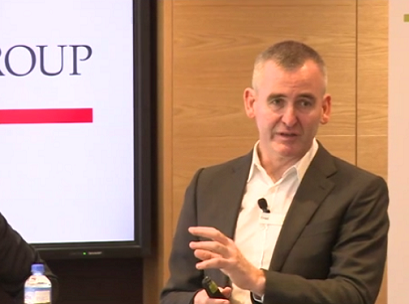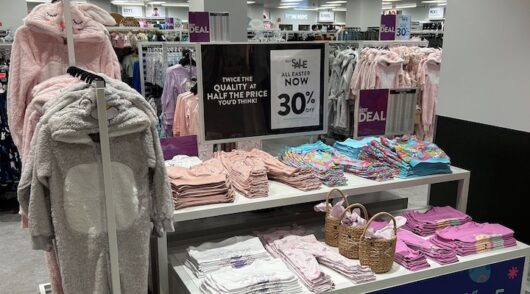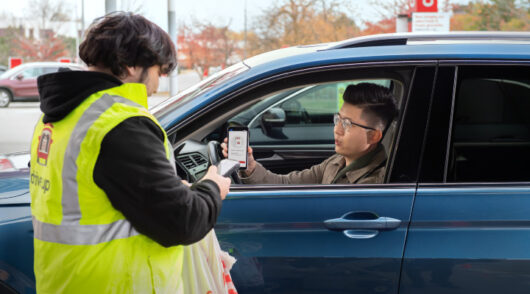 Woolworths Group CEO Brad Banducci has asked analysts and investors to have “faith” in Big W’s turnaround prospects, as a concession that the struggling business will lose at least another $150 million next year prompted questions about why the business hasn’t been junked already.
Woolworths Group CEO Brad Banducci has asked analysts and investors to have “faith” in Big W’s turnaround prospects, as a concession that the struggling business will lose at least another $150 million next year prompted questions about why the business hasn’t been junked already.
Woolies has invested an unspecified sum in dropping the price on 2000 core product lines by an average of 20 per cent, as part of a broader plan that began in March to right the ship in its discount department store arm, which experienced a 5.8 per cent decline in sales for the year ended 30 June.
But when asked to provide a timeline on when the business may find itself back in the black, Banducci said it would be “false precision” to say he knew when a turnaround may occur.
“[Turnaround] comes at some point, and you have to have that as an article of faith and do the right things, [so that] eventually there’s a system effect and you do get that moment,” Banducci said.
“Just like in supermarkets if you are going to climb the mountain you climb it one step at a time, so it’s a very practical focus in FY18 which we think will be very important.”
Recent Big W CEO appointee David Walker, the third chief executive in as many years, said management was “realistic” about what it could achieve in FY18, signalling a “multi-year journey” that will include additional price investment in the next twelve months.
Walker conceded that Big W had lost trust with its customers on price and range, with surveys finding that the brand is perceived as “dated and dormant”, but that progress was being made on revitalising its customer value proposition.
Woolworths don’t believe foot traffic is a problem for Big W, instead noting conversions and basket size as key metrics that could deliver material improvements for the business moving forward.
“When we spoke to our customers they told us very clearly that they didn’t believe we we’re giving them the best value in the market and our prices weren’t on the money,” Walker said. “We think that’s a major driver behind the consistent decline in transactions across our business.”
“In the second half, we have invested or started to invest in our price drop campaign, which gives us the framework for how we start to rebuild the price credentials we’re looking to get back with our customers,” he continued.
Survey data from more than 5,000 customers and 9,000 team members has informed the creation of a strategy that will focus on providing customers with low prices without compromising on quality.
That plan has seen the creation of six customer “universes” created, as was flagged in leaked emails in March, with Walker explaining that the kids and home categories will define the offer, bringing customers into stores where they’ll subsequently cross-shop him, her, leisure and everyday lines.
Work has already begun on improving “core processes”, with a focus on stock availability, direct sourcing and online fulfilment in the first twelve months.
“We’re very focused on regaining trust of our customers, particularly on price and…on fixing the core processes in our business, because until we do that it’s going to be tough to move this business forward,” Walker said.
Big W will borrow from Woolies’ supermarkets “customer first ranging” initiative, which will leverage customer feedback to simplify the customer offer.
Walker has already moved to reduce the number of kitchen spoons on sale at Big W from 14 varieties across eight brands to eight varieties across four brands.
“From the three categories, we’ve started [customer first ranging] we have cut back range and cut back some brands,” Walker explained.
This will be reconciled with feedback from customers that want expanded ranges with more brands, with a “trade up” initiative that will showcase “exclusive brands” set to be brought in to provide a point of difference to the increasing prevalence of direct sourcing in the $40 billion general merchandise category.
A brand revitalisation program is now also underway to combat “dated and tired” stores, with a “light refresh” to some of the portfolio and more clear communication on price changes now being showcased, although Walker said that store refurbishments aren’t a focus in the coming twelve months.
Walker now appears to be locked in at the helm, saying that the leadership team for the turnaround was now set at the executive level, with a commercial team restructure below that having already cemented a buying strategy centred around the new product universes.
“Traditionally our commercial team [was] structured around soft and hard goods, which reflects how we source product, either through domestic national brands or direct source,” Walker explained. “What we’ve moved to now is structuring our commercial team around universes, so the head of each will now look after customer strategy.”
Big W closed two stores in FY17 and opened one – Woolworths wouldn’t call out whether there would be any consolidation, which analysts have long said is an issue for discount department stores, but said there may be fewer stores in the future.
Woolies’ latest attempt to turnaround Big W comes amid the continued effort from rival Wesfarmers to reposition Target towards growth, with a store network plan that will see its footprint shrink in the coming years already announced.
Kmart, the strongest performing discount department store in the market, is a key competitor for Big W and has been aggressively cutting prices amid the prospective entry of Amazon into the market.
Access exclusive analysis, locked news and reports with Inside Retail Weekly. Subscribe today and get our premium print publication delivered to your door every week.





